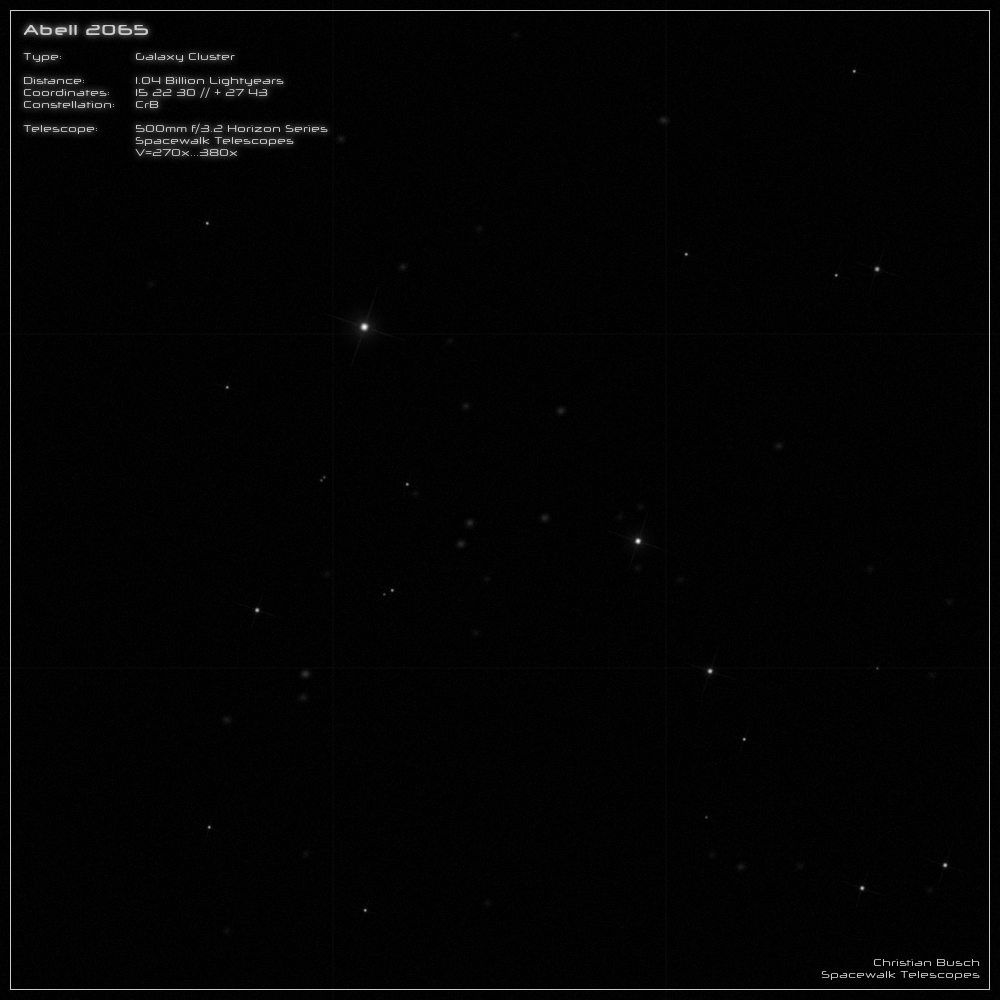Abell 2065 - Galaxy Cluster
Abell 2065 is one of the richest galaxy clusters in the northern sky. It is located 1.04 billion light-years away in the constellation Corona Borealis. More
than 400 galaxies are spread over an area of 0.8 square degrees. That is why the cluster belongs to Richness Class 3. A special feature is that Abell 2065 is
strongly concentrated towards the center, so there are a lot of galaxies in a small field. The redshift is given as z=0.078, resulting in an escape velocity of
22,400 kilometers per second. So every 17 seconds Abell 2065 moves away by the distance Earth-Moon.
Also interesting is the fact that Abell 2065 belongs to a much larger structure - the "Corona Borealis Supercluster". This supercluster is composed of the
galaxy clusters Abell 2056/2061/2065/2067/2079 and Abell 2089. Sometimes Abell 2092 and Abell 2124 are also included. But of all these single galaxy
clusters, Abell 2065 is by far the most massive cluster and therefore forms the gravitational center of the "Corona Borealis Supercluster". The extent of
the supercluster is given as 330 million by 140 million light years - a huge structure. The total mass is just as impressive, estimated at 10 quadrillion solar
masses.
The brightest galaxy is named "PGC 54883", has a brightness of about 15.5mag and is located near the center of AGC 2065.
----------------------------------------------------------------------------------------------------------------------------------------------
Observing AGC 2065 was not easy, despite 20" aperture and magnification of over 300x. It's not that you look into the eyepiece and then suddenly see all
the galaxies included in the drawing. No, each of these tiny 17mag galaxies has to be worked out - you have to know the exact position compared to the
surrounding stars and guide the few photons with indirect vision to the right place on your retina. This can take time. And so 1-2 minutes can pass until you
finally spot the galaxy. I repeated this procedure for more than 40 galaxies and was therefore busy for quite a while.
The patience was definitely worth it. Never before I could find so many galaxies in this cluster and so I could get at least a small impression of this huge
accumulation of matter, even if I probably can never really imagine the true dimensions.

